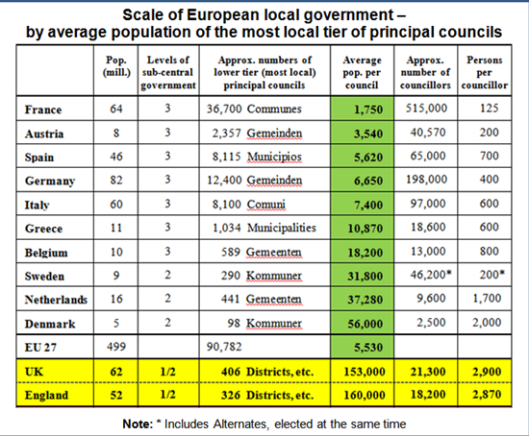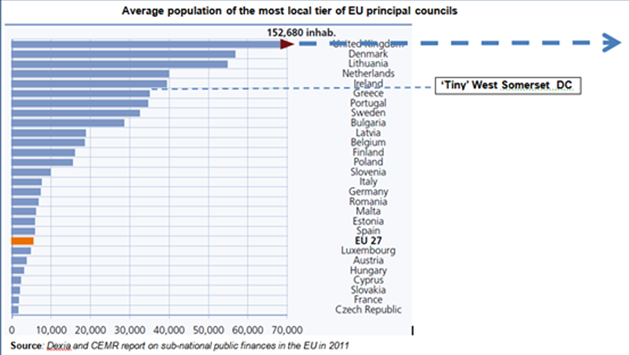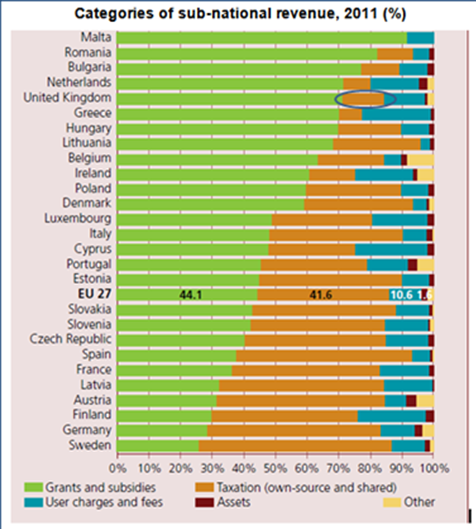Chris Game
Even allowing for local government’s legendary Stakhanovite working practices, the sector can’t usually manage that many hot news stories on Christmas Eve, so you do tend to notice them, especially if they contain a strand of possible personal interest. I remember well, then, the BBC’s announcement this past Christmas Eve that Cornwall Council CE, Kevin Lavery, had accepted a five-year appointment as CE of Wellington City Council and would be moving to New Zealand to take up the post in March – oh yes, at an annual salary of NZ$400,000, which converted then into £203,000, but today into £219,000 (I note irritably).
The reason (for my remembering, not for his moving) was that I happened to know that England’s cricketers would be playing the second Test Match in their series against the New Zealanders at Wellington’s charming and historic Basin Reserve ground in March – and I was planning to watch it. How brilliant, I thought, if I could do a quick interview with Lavery, just a couple of weeks into his new job, about his first impressions, contrasts with Cornwall, etc. Unfortunately, it quickly turned out that – for, I have to concede, eminently good reasons – ‘March’ in fact meant 31st March, by which time I would be well back in the UK.
More recently – like this morning – it also turned out that the final day of the said Wellington Test Match would almost certainly be rained off. So, lacking anything better to do, I thought I’d report anyway on some of the stuff that the interview might have covered.
First, the contrasts and similarities. Wellington City has a population of 200,000 and the biggest of 9 and a bit elected councils (1 regional, 8 and a bit city and district – don’t ask!) in the Wellington region. The council has an elected mayor (currently Green), 14 councillors, employs 1,500 staff, and has a budget of NZ$400 million (£220 million).
Cornwall has a population of 535,000 and a 123-member council – roughly the number of councillors plus mayors in the whole Wellington region. The council employs 19,000 staff – not far short of NZ local government’s total employment – and has a budget of about £1 billion.
In short, Lavery’s new job represents an apparently significant drop in scale, but barely a drop at all in remuneration. I quoted his salary at the outset, partly because the NZ media (and possibly public) are at least as fascinated/obsessed with executive pay, pay-offs, etc. as ours are, but mainly because so far his financial cost is one of the very few things that most Wellingtonians, including most councillors, know about their new CE. He was head-hunted in a recruitment process that cost NZ$157,000, including NZ$12,000+ to fly him out for interview; he can claim up to NZ$40,000 removal costs, and is promised a ‘golden parachute’ payment of up to NZ$200,000, if the job disappears in the regional governmental reorganisation expected over the coming couple of years. As one councillor put it: “We don’t know what we’re getting, but he’s cost us a bomb to get and he’ll cost us a bomb if he goes”.
So it’s fair to say that his relations, initially at least, with some councillors could be as touchy as they were with some of those in Cornwall, where, it may be recalled, the Conservative leader, Alec Robertson, was deposed and plans for a massive Lavery-driven shared services joint venture project had to be halted after they’d failed to win majority councillor backing.
Reportedly, Lavery was first sounded out by the Wellington headhunters immediately following the leadership change and the resulting withdrawal of one of the two bidders for the shared service joint venture, leaving only BT, one of Lavery’s former employers. But whatever the detailed sequence of events, the reputation preceding him to Wellington has been that of a ‘Marmite (or perhaps Vegemite) bureaucrat’ – you either love him or loathe him – and one with an undisguised enthusiasm for privatising and outsourcing services.
From which you might suppose that the costly new appointment was perhaps a symbolic act on the part of a council whose leadership had recently taken a shift to the right, and was looking at one and the same time to signal its political authority and a major change in policy direction. You might, but you’d be quite wrong.
If party politics in Cornish local government is, by UK standards, relatively low-key, in Wellington – and indeed in NZ local government generally – it is barely visible and almost uninterpretable to the untrained eye. In the city’s 2010 local elections, only 3 of the 14 successful candidates had stood openly under party labels (2 Labour and 1 Green), and the Mayor, elected for the first time (like councillors, for a three-year term), though a Green party member, had campaigned as an Independent.
Celia Wade-Brown’s election as Mayor seemed to surprise her almost as much as it did pretty well everyone else. Born and brought up in England, she came to NZ only in her late twenties, and, with little prior public warning, decided in 2010 not to recontest her council seat, but instead to challenge the high-profile mayoral incumbent, Kerry Prendergast, seeking her fourth term of office. In the STV election, Prendergast was a comfortable 6% ahead after the count of first preference votes, was still ahead on the second, third and fourth counts, but was overtaken by Wade-Brown on the fifth and final count by just 176 out of more than 60,000 votes cast.
The mayoral and councillor results combined were interpreted as representing at least a modest move towards the centre-left, but if voters were looking for a significant leftward policy swing, most must have been disappointed. Indeed, the CE appointment, involving as it did the personally humiliating dismissal of the former CE after 15 years and for apparently nothing very particular, was one of the few visible signs of an intended change of direction. As far as the 2013/14 Draft Annual Plan and budget is concerned, the headlines must look as familiar to Wellington electors as they do to us: large-scale savings (NZ$240 million over 10 years), necessitating service cuts, job losses, increases in fees and charges, and ongoing outsourcing.
A major reason for Lavery not taking up his post until the end of the month is that there are three important events taking place between now and then, the consequences of which will take up a sizeable chunk of his in-tray. One is the Council vote on 27th March to approve the Draft Annual Plan, detailing the Council’s work programme and proposed rate and fee increases, following which it will, as required, go out for a month’s public consultation, before coming back to the Council for final approval in June.
This year’s Draft Plan cuts council spending by NZ$9 million and proposes a rate (property tax) increase of 2.8%, and several of the detailed cuts especially are controversial: restricted library opening hours, increased parking charges, “changing the operating model” of the aquatic centre crèche (unsubtle euphemism there!), reduced grants to the Zoo Trust and ‘Positively Wellington Tourism’. All can, of course, and doubtless will be compared to the new CE’s salary.
Before that, on 21st March, another public consultation begins – on three options for local government reform across the whole Wellington region. Two of the three are alternative ‘super city’ models, as favoured by the regional reform working party. The third is a minimally modified status quo, added by the Mayor and councillors who oppose a super-city solution and argue that the public should be presented with a wider-ranging choice. Lavery will be on familiar territory here.
Also on 21st March Wellington councillors vote again on the national Transport Agency’s proposal for a 300-metre long, 9-metre high concrete flyover to ease the perpetual congestion round the huge roundabout within which is situated the Basin Reserve cricket ground (where in fact I should be sitting at this moment). We cricket fans fear the flyover would seriously blight our spectating, to say nothing of its impact on hundreds of local residents. The Mayor – for whom almost any kind of road development is anathema – and a majority of councillors argue that the congestion can be resolved by a combination of other means. However, some of the Mayor’s phraseology is worrying. She talks rather vaguely of ‘fine-tuning’ the present roundabout, and of how Basin Reserve “must not be blighted by a naked block of concrete”, as if various forms of pleasingly attired concrete were available alternatives. And now there’s talk of a couple of the eight councillors who opposed the flyover in December maybe switching sides following a two-month council staff investigation. What a pity I couldn’t have given the new CE a short personal briefing on the issue.
Chris is a Visiting Lecturer at INLOGOV interested in the politics of local government; local elections, electoral reform and other electoral behaviour; party politics; political leadership and management; member-officer relations; central-local relations; use of consumer and opinion research in local government; the modernisation agenda and the implementation of executive local government.



